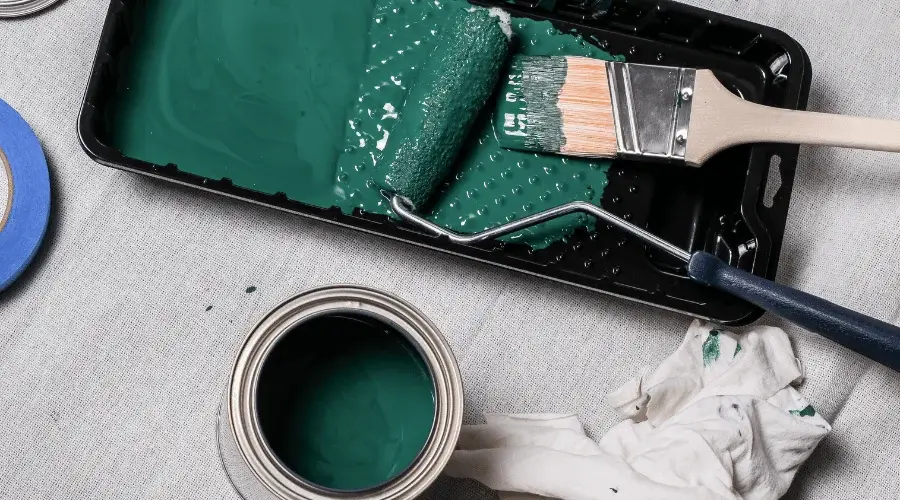In the quest for a more sustainable and environmentally conscious lifestyle, many individuals are reevaluating their choices, from the products they use to the materials that make up their living spaces. One significant area where this shift occurs is in the selection of paints for homes and buildings. Enter eco-friendly paints – a conscious choice that beautifies your living spaces and contributes to a healthier planet. In this guide, we’ll explore what eco-friendly paint is, why it’s crucial to opt for it, and what important aspects to consider while deciding.
Embark on a journey of home transformation with our top-tier house painting services. Discover the perfect synergy of quality and color, exclusively with New City House Painters
What is Eco-Friendly Paint?
Eco-friendly paint, also known as green or environmentally friendly paint, is a type of paint that is made with the least amount of environmental effects in mind. Unlike traditional paints containing volatile organic compounds (VOCs) and other harmful chemicals, eco-friendly paints are formulated with natural ingredients and low-to-zero levels of toxic substances. These paints are crafted to cut down on the production’s environmental impact, application, and disposal of paint products.
Why is it Important to Use Eco-Friendly Paint?
- Reduced Environmental Impact – Eco-friendly paints play a crucial role in minimizing the release of harmful chemicals into the air. Traditional colors often contain VOCs, which can contribute to indoor air pollution and have adverse effects on human health. Choosing eco-friendly options contributes to cleaner indoor and outdoor air quality.
- Healthier Living Space – VOCs’ absence or minimal presence in eco-friendly paints translates to healthier living spaces. VOCs can cause respiratory problems, headaches, and nausea, especially in enclosed environments. Opting for paints with low VOC content ensures that your home is a safer and more comfortable place for you and your family.
- Sustainable Resource Usage – Many eco-friendly paint brands prioritize the use of sustainable and renewable resources in their formulations. This includes plant-based ingredients, natural pigments, and recycled materials. By supporting these products, you actively participate in the promotion of sustainable practices within the paint industry.
What Should I Look for in an Eco-Friendly Paint?
- Low VOC Content – When searching for eco-friendly paints, always check the VOC content. Low or zero-VOC paints are an excellent choice for reducing indoor air pollution. Look for products that clearly state their VOC levels on the label.
- Natural Ingredients – Eco-friendly paints often feature natural ingredients like plant-based oils, resins, and pigments. Avoid paints that contain synthetic additives and opt for those with a transparent list of natural components.
- Certifications – Reliable, eco-friendly paints are often certified by third-party organizations, such as Green Seal or the Greenguard Environmental Institute. These certifications indicate that the product has met specific environmental and performance standards.
- Recyclable Packaging – A truly eco-friendly paint considers the entire lifecycle of its product, including packaging. Look for paints in recyclable or biodegradable packaging to minimize environmental impact.
Types of Eco-Friendly Paints
- Water-Based Paints – Water-based or latex paints are popular eco-friendly options. These paints have lower VOC levels compared to oil-based paints and are easier to clean up with water. They dry quickly, emit fewer odors, and are a great choice for indoor applications.
- Milk Paints – The natural components used to make milk paints include milk protein, lime, and earth pigments. They are biodegradable, VOC-free, and have a unique matte finish. Milk paints are an excellent option for achieving a rustic or vintage look.
- Clay Paints – Clay paints are derived from natural clay and mineral pigments. They are breathable, allowing moisture to evaporate from the walls, and provide a natural, textured finish. Clay paints are an excellent choice for those seeking a healthier indoor environment.
In conclusion, using eco-friendly paint extends beyond the desire for a trendy or aesthetically pleasing space. Promoting a safer and healthier environment at home is a conscious decision. You actively participate in the movement towards a more sustainable future by opting for paints with low VOC content, natural ingredients, and sustainable practices. So, the next time you pick up a paintbrush, make it a brushstroke towards a greener and more eco-conscious lifestyle. The environment, your house, and your health will all appreciate it.







